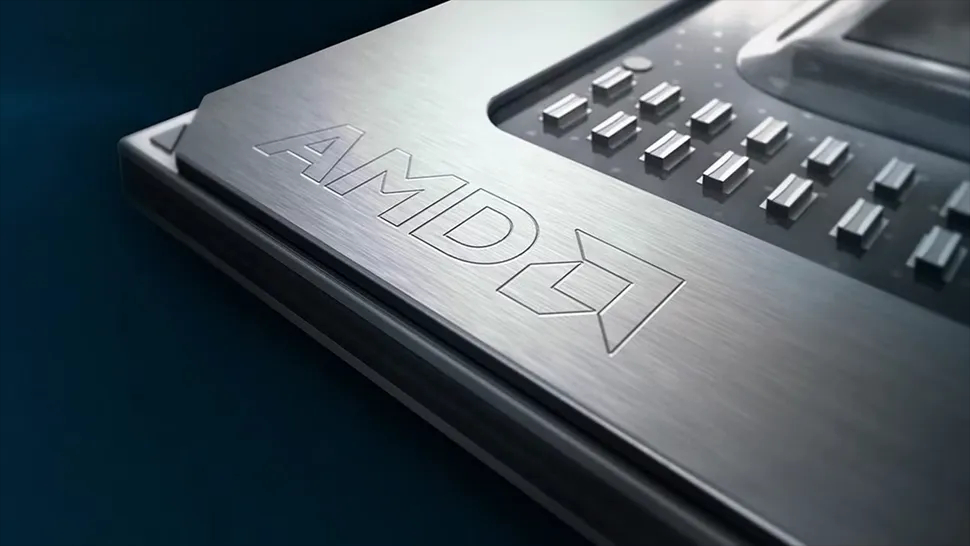Strix Halo Radeon 8060S iGPU benchmarked in games, delivers butter-smooth 1080p performance —AMD's AI-focused Ryzen AI Max 395+ APU also excels at gaming
AMD's AI-focused Ryzen AI Max APUs have redefined what integrated GPUs are capable of, even in gaming.

AMD's latest Ryzen AI Max APUs might be designed primarily to crunch through heavy AI workloads, but they are also quite capable gaming beasts. Integrated graphics enthusiast RandomGaminginHD on YouTube benchmarked a Minisforum MS-S1 Max mini-pc boasting AMD's flagship Ryzen AI Max 395+ APU, and was astonished at the APU's performance in games. The chip's integrated Radeon 8060S iGPU was able to provide butter-smooth 1080p performance in all the games he tested.
The games the YouTuber tested featured Battlefield 6, Borderlands 4, Counter Strike 2, Cyberpunk 2077, Elden Ring, GTA 5 Enhanced Edition, Kingdom Come Deliverance 2, Marvel Rivals, Red Dead Redemption 2, and Outer Worlds 2. Graphics settings were varied based on each title, so not all games were tested at their highest quality settings. However, all games were tested at 1080p.

Game | Average FPS |
Battlefield 6 | 86.7 FPS |
Borderlands 4 | 54.8 FPS |
Counter Strike 2 | 263.7 FPS |
Cyberpunk 2077 (rasterized) | 66.8 FPS |
Cyberpunk 2077 (ray tracing) | 45.4 FPS |
Elden Ring | 59.6 FPS |
GTA 5 Enhanced | 76.9 FPS |
Kingdom Come Deliverance 2 | 89.8 FPS |
Marvel Rivals | 78.9 FPS |
Red Dead Redemption 2 | 82.2 FPS |
In Battlefield 6, at the high preset (with HD textures not installed), with FSR set to its "Native AA" mode, the Ryzen AI Max 395+ was able to pump out 86 FPS average with 0.1% lows just under 60 FPS. Borderlands 4 ran at 54.8 FPS average at the lowest quality settings with "Native AA" mode set for FSR. That might not sound like great performance, but it's worth mentioning that Borderlands 4 gets poor FPS at low settings even on discrete GPU hardware.
Counter-Strike 2 ran the best at over 250 FPS average at high settings with MSAA off. The only trouble the mini-PC had was in the 0.1 lows, which dipped all the way down to 66 FPS. But this game is renowned for its performance problems, so the low 0.1% lows are likely related to that rather than being hardware-specific.
Cyberpunk 2077 was the most demanding game the YouTuber tested (including graphics settings tested). At the high preset with high crowds enabled and high textures enabled, the integrated 8060S achieved 67FPS average with 36.4 FPS for the 0.1% low FPS. Switching things up a few notches with the RT Ultra preset turned on and FSR 3 quality mode activated, the game ran at 45.4 FPS average and 27.2 FPS for the 0.1% low frame rate.
The rest of RandomGaminginHD's testing suite ran well: Elden Ring achieved 60 FPS – with the game's 60FPS cap, mind you, at the game's high preset. GTA 5 Enhanced Edition ran at 77 FPS average at the game's very high RT preset, Kingdom Come Deliverance 2 ran at 90FPS average with the high preset and SMAA 2TX enabled. Marvel Rivals ran at 79 FPS average with very targeted settings, featuring the high preset but with global illumination and reflection quality turned off. FSR 3 was also set to "Native AA" mode in this title.
Red Dead Redemption 2 ran at 82 FPS average using Ultra Textures, everything else set to high, TAA on high, Geo LOD set to max, and the grass LOD set to 2 out of 10. Outer Worlds 2 ran at 65 FPS average at medium settings, and TSR set to native resolution.
Get Tom's Hardware's best news and in-depth reviews, straight to your inbox.
The Ryzen AI Max series was not made specifically for gaming; it was a platform designed for power users and professionals who need a super-fast computing chip in an ultra-compact mobile form factor. It was also designed to run large language models, especially the 128GB LPDDR5x models, and allegedly has the performance chops to outperform an RTX 4090 by over 2x in tokens per second.
But, all of that high-performance hardware, by nature, turns the APU into a very good gaming processor (albeit an overkill gaming platform in some regards). We've already seen impressive benchmark numbers from the 395+'s integrated 8060S iGPU, with performance equivalent to an RTX 4060 in other devices. The 8060S' performance is a testament to its impressive specs, featuring 40 CUs and 2,560 shader cores – more CUs than a vanilla PlayStation 5, and 16 Zen 5 CPU cores paired to a huge (for a mobile APU) 256-bit interface with fast LPDDR5X memory. RandomGaminginHD's benchmarks further solidify the 8060S's impressive performance as an integrated graphics solution.
It is no wonder handheld gaming manufacturers are implementing this APU as a flagship gaming option, including GPD and its Win 5.

Follow Tom's Hardware on Google News, or add us as a preferred source, to get our latest news, analysis, & reviews in your feeds.

Aaron Klotz is a contributing writer for Tom’s Hardware, covering news related to computer hardware such as CPUs, and graphics cards.
-
BingyMike1982 It is important to remember this is an APU. There is no GPU. Just CUs on the CPU die and shared system ram. This performance is amazing and AMD is on to something here. But just wait. If the rumors are true about the refresh and Medusa Point Zen 6 variant, There will be a new halo chip released with 3DV Cache. Why would that matter so much? Memory bandwidth to the igpu cores. The 3DV cache will act as a buffer between the IGPU and the system ram, reducing latency to near instantaneous. This could in theory make frame buffer performance faster than GDDR memory. Ultra low latency cache will obliterate the 1% lows and push the sustained FPS to new heights. This is exciting tech and this is just the first iteration of it. Given the cost of GPUs thanks to the Ai scam bubble, This is what gamers need. Imagine potentially native 4k 60fps gaming in a hand held or small form factor PC. That is the inevitable end game of where this is going.Reply
Exciting times ahead for AMD and their Halo APUs. -
heffeque Can confirm.Reply
Very happy Framework Desktop 128 GB owner.
I got the Noctua version, I 3D printed Noctua's modded panel at a shop for next to no price (HERE), so now I have a dead silent mini-PC that performs like a decent gaming PC while sipping barely any power.
Couldn't be happier! -
heffeque Reply
You are thinking of Medusa Halo.BingyMike1982 said:It is important to remember this is an APU. There is no GPU. Just CUs on the CPU die and shared system ram. This performance is amazing and AMD is on to something here. But just wait. If the rumors are true about the refresh and Medusa Point Zen 6 variant, There will be a new halo chip released with 3DV Cache. Why would that matter so much? Memory bandwidth to the igpu cores. The 3DV cache will act as a buffer between the IGPU and the system ram, reducing latency to near instantaneous. This could in theory make frame buffer performance faster than GDDR memory. Ultra low latency cache will obliterate the 1% lows and push the sustained FPS to new heights. This is exciting tech and this is just the first iteration of it. Given the cost of GPUs thanks to the Ai scam bubble, This is what gamers need. Imagine potentially native 4k 60fps gaming in a hand held or small form factor PC. That is the inevitable end game of where this is going.
Exciting times ahead for AMD and their Halo APUs.
It won't be out until 2027 (more likely 2028).
Strix Point -> Medusa Point
Strix Halo -> Medusa Halo -
BingyMike1982 Reply
Yes I clearly said the medusa Point variant. Just as Strix halo is a strix point zen 5 halo variant, Medusa Halo will be a Medusa point zen 6 variant. And indeed it's going to be awesome. Ut rumor on the streets there is a strix halo refresh coming with 3DV cache. But not confirmed.heffeque said:You are thinking of Medusa Halo.
It won't be out until 2027 (more likely 2028). -
helper800 Reply
If the PC did not have a GPU, it would not be able to output video. There is a GPU within the CPU called an iGPU. To my understanding, APU is only a marketing term that AMD uses to signify a CPU with an iGPU that is more powerful than just a video output.BingyMike1982 said:It is important to remember this is an APU. There is no GPU. Just CUs on the CPU die and shared system ram.